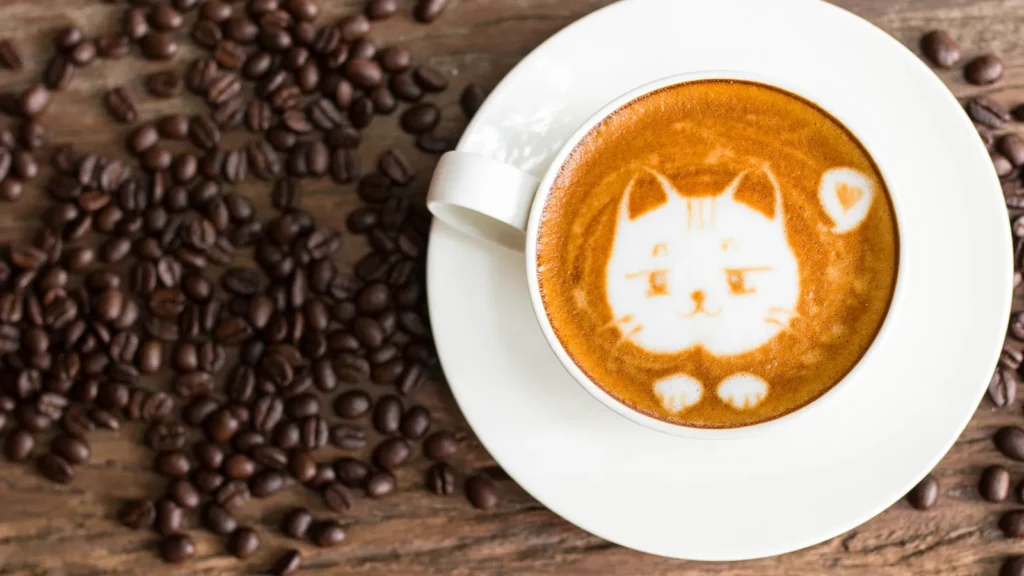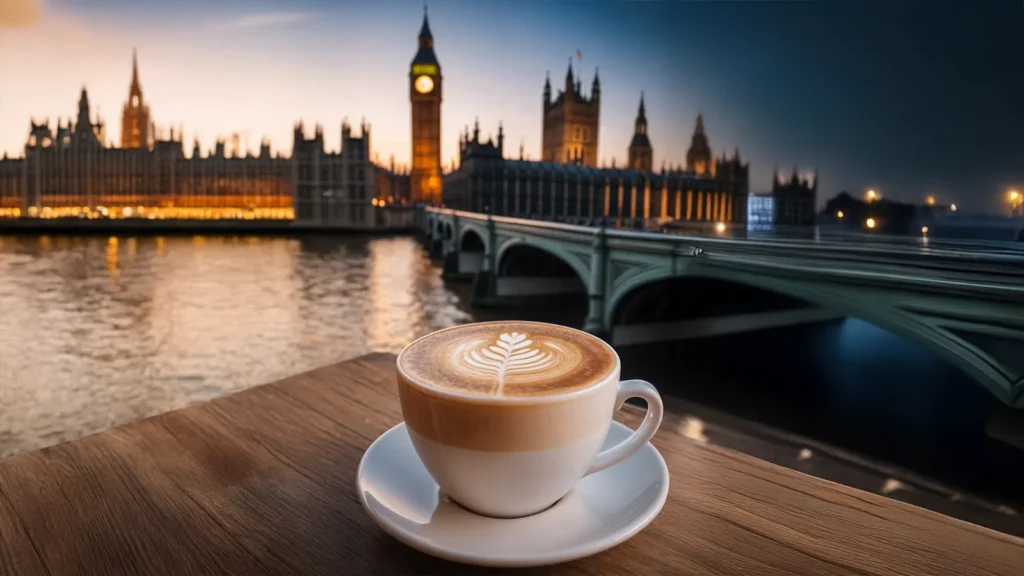For many, the question of what makes good coffee is a deeply personal one, a quest for that perfect cup that awakens the senses and sets the tone for the day. Whether you’re a seasoned connoisseur or just starting your journey into the world of coffee, understanding the elements that contribute to a truly satisfying brew can transform your daily ritual. It’s not just about the caffeine kick; it’s about the aroma, the flavour, the texture, and the overall experience.
Navigating the vast array of coffee options can be daunting, from the bewildering variety of beans to the seemingly endless brewing methods. This guide aims to demystify the process, offering practical advice and simple tips for everyday coffee lovers. We’ll explore the key factors that influence coffee quality, helping you make informed choices and ultimately, enjoy better coffee at home.
By the end of this article, you’ll have a clearer understanding of what makes good coffee and be equipped with the knowledge to elevate your own coffee game. From selecting the right beans to mastering basic brewing techniques, we’ll cover everything you need to know to consistently brew a delicious cup.
The Journey of the Bean: From Farm to Cup
The foundation of any great cup of coffee lies in the quality of its beans. Truly good coffee begins long before it reaches your grinder, with the careful cultivation and processing of the coffee cherry. Understanding this journey is crucial for appreciating the nuances in your cup.

Origin and Terroir
Just like wine, coffee’s flavour profile is heavily influenced by its origin and the specific growing conditions, often referred to as terroir. Different regions around the world produce beans with distinct characteristics. For instance, Ethiopian coffees are often celebrated for their bright, floral, and fruity notes, while South American beans, particularly from Brazil and Colombia, tend to be known for their balanced, nutty, and chocolatey profiles. Central American coffees from Costa Rica or Guatemala might offer brighter acidity and hints of citrus. When you’re looking to choose good coffee, paying attention to the origin can give you a strong indication of the flavour experience you can expect.
Processing Methods
After harvesting, coffee cherries undergo various processing methods to separate the bean from the fruit. The most common methods are washed, natural (dry), and honey processing, each imparting unique characteristics to the final cup. Washed coffees typically have a cleaner, brighter, and more acidic profile, as the fruit is removed before drying. Natural processed coffees, where the cherry is dried with the bean inside, often exhibit more pronounced fruity, sweet, and sometimes fermented notes. Honey processing, a hybrid method, can result in a coffee with a good balance of sweetness and acidity. The choice of processing method significantly impacts what makes good coffee in terms of its ultimate taste.
Roasting: The Art and Science
Roasting is a critical step that transforms green coffee beans into the aromatic, flavourful beans we recognise. The roast level dramatically affects the coffee’s taste, body, and acidity. Generally, roasts are categorised as light, medium, and dark. Light roasts preserve more of the coffee’s original characteristics, offering brighter acidity and nuanced flavours, often with hints of fruit or flowers. Medium roasts strike a balance, developing more body and sweetness while retaining some of the bean’s origin characteristics. Dark roasts, on the other hand, produce bold, robust flavours, often with notes of chocolate, nuts, and a smoky finish, and typically have less acidity. For those looking to choose good coffee, considering your preferred roast level is essential for finding a brew that suits your palate. A well executed roast is paramount to what makes good coffee.
How to Choose Good Coffee: A Practical Guide for UK Coffee Lovers
When faced with the overwhelming selection at your local supermarket or speciality coffee shop, knowing how to choose good coffee can feel like a challenge. However, armed with a few key pieces of information, you can confidently select beans that will deliver a satisfying brew. This section offers a practical coffee guide UK focused on helping you make informed decisions.

Freshness is Key
One of the most crucial factors in determining what makes good coffee is its freshness. Coffee beans are at their best when brewed within a few weeks of their roast date. As soon as coffee is roasted, it begins to degas and lose its aromatic compounds. Look for roast dates on the packaging, rather than “best before” dates, which can be misleading. Many speciality coffee shops and roasters in the UK prominently display roast dates on their bags. Buying freshly roasted beans will significantly enhance the flavour and aroma of your coffee.
Whole Beans vs. Ground Coffee
For the freshest and most flavourful coffee, always opt for whole beans and grind them just before brewing. Pre ground coffee starts to lose its volatile aromatic compounds much more quickly due to increased surface area exposed to oxygen. While convenient, pre ground coffee sacrifices a significant amount of flavour and aroma. Investing in a good quality burr grinder is one of the best coffee tips for anyone serious about improving their home brewing experience. The difference in taste is truly remarkable.
Understanding Packaging
The packaging of coffee beans also plays a role in preserving freshness. Look for bags with a one way valve. This valve allows carbon dioxide to escape from the beans (a natural process after roasting) without allowing oxygen in, which can stale the coffee. Opaque, airtight packaging is also preferable to clear bags, as light can degrade coffee quality. When you’re looking to choose good coffee, don’t overlook the importance of proper packaging.
Explore Single Origin vs. Blends
You’ll often see coffee labelled as either single origin or a blend. Single origin coffees are made from beans sourced from a specific farm, region, or country, offering a unique flavour profile that reflects its origin. Blends, on the other hand, combine beans from different origins to create a more balanced and consistent flavour profile, often designed for specific brewing methods or to achieve a particular taste. Experimenting with both can help you discover what makes good coffee for your personal taste. Your local coffee guide UK might recommend specific blends tailored for espresso or filter.
Mastering the Brew: Essential Coffee Brewing Methods and Tips
Even the best coffee beans can result in a mediocre cup if not brewed correctly. Understanding different coffee brewing methods and adopting a few key coffee tips can significantly improve your daily brew. This section will delve into popular brewing techniques and offer advice for achieving optimal extraction.
The Importance of Water Quality
Water makes up over 98% of your coffee, so its quality is paramount. Tap water can contain impurities, chlorine, and minerals that can negatively impact the taste of your coffee. For the best results, use filtered water. This is one of the simplest yet most impactful coffee tips for improving your brew. Good quality water will allow the true flavours of the coffee to shine through, helping you appreciate what makes good coffee.
Grind Size Matters
The grind size of your coffee is crucial for proper extraction. Too coarse, and the coffee will be under extracted, resulting in a weak, sour taste. Too fine, and it will be over extracted, leading to a bitter, astringent flavour. Each brewing method requires a specific grind size:
- Coarse: French Press, Cold Brew
- Medium Coarse: Chemex, Automatic Drip Coffee Makers
- Medium: Pour over (e.g., V60, Kalita Wave)
- Medium Fine: Aeropress (depending on recipe), Moka Pot
- Fine: Espresso
Adjusting your grind size based on your brewing method is one of the most important coffee tips you can follow to ensure what makes good coffee is consistently achieved.
Brewing Temperature
The ideal water temperature for brewing coffee is generally between 90∘C and 96∘C (195∘F and 205∘F). Water that is too hot can scald the coffee and extract bitter compounds, while water that is too cool can lead to under extraction and a weak, sour cup. If you don’t have a temperature controlled kettle, bringing water to a boil and then letting it sit for about 30 seconds to a minute before pouring is a good approximation.
Popular Brewing Methods
Here are a few popular coffee brewing methods that yield excellent results:
- French Press: Known for its full bodied and robust coffee. It’s an immersion method where coffee grounds steep in hot water before being pressed down. It requires a coarse grind.
- Pour Over (e.g., V60, Chemex): These methods produce a clean, bright, and nuanced cup. They involve slowly pouring hot water over coffee grounds in a cone shaped filter, allowing gravity to draw the water through. A medium grind is typically used. Many people in the coffee guide UK consider pour over to produce some of the best coffee.
- Aeropress: A versatile and portable brewer that can produce a range of coffee styles, from espresso like concentrates to full bodied filter coffee. It uses immersion and pressure for extraction. Grind size varies depending on the desired outcome.
- Espresso Machine: For those who love concentrated, intense coffee, an espresso machine is essential. It uses high pressure to force hot water through finely ground coffee, creating a rich shot with crema. This is often seen as the pinnacle of what makes good coffee for many.
- Moka Pot: A stovetop brewer that produces a strong, espresso like coffee through steam pressure. It’s a popular choice for those who enjoy strong coffee without an espresso machine.
Experimenting with different coffee brewing methods will help you discover your preferred taste profile and fine tune what makes good coffee for you.
The Role of Storage and Maintenance
Even after you’ve sourced the best coffee beans and mastered your brewing technique, improper storage and neglected equipment can still compromise your coffee’s quality. Paying attention to these often overlooked aspects is vital for consistently brewing good coffee.
Proper Coffee Storage
To maintain the freshness and flavour of your coffee beans, proper storage is essential. Exposure to air, light, heat, and moisture are the enemies of coffee. Always store your beans in an opaque, airtight container in a cool, dark place, away from direct sunlight and heat sources like ovens. Avoid storing coffee in the refrigerator or freezer unless it’s in a truly airtight, vacuum sealed container for long term storage, as coffee can absorb odours from other foods. Storing your coffee correctly is a simple yet effective coffee tip to preserve its quality and ensure what makes good coffee remains intact.
Grinder and Brewer Maintenance
Regular cleaning of your coffee grinder and brewing equipment is paramount. Residual coffee oils can build up over time, becoming rancid and imparting off flavours to your fresh brew.
- Grinder Cleaning: For grinders, brush out old grounds regularly. For burr grinders, periodically disassemble and clean the burrs according to the manufacturer’s instructions.
- Brewer Cleaning: For drip coffee makers, run a cycle with a descaling solution (like a mix of vinegar and water) every few months to remove mineral build up. For espresso machines, backflushing and cleaning the portafilter and shower screen are vital after each use. French presses and pour over devices should be thoroughly rinsed after each brew.
Clean equipment ensures that the only flavours you’re tasting are from your best coffee beans, not from old, stale residues. This meticulous approach to maintenance directly contributes to what makes good coffee.
Elevating Your Coffee Experience: Beyond the Basics
Once you’ve grasped the fundamentals of what makes good coffee, you can begin to explore ways to further enhance your coffee experience. These additional coffee tips delve into refining your palate and expanding your coffee horizons.

Developing Your Palate
Like wine tasting, appreciating coffee involves developing your palate. Pay attention to the different flavour notes you perceive – are they fruity, nutty, chocolatey, floral, or spicy? Notice the acidity (bright, crisp, dull), the body (light, medium, full), and the finish. There are many flavour wheels available online that can help you identify specific notes. Regularly tasting different coffees and noting their characteristics will sharpen your ability to distinguish what makes good coffee and what doesn’t, according to your preferences.
Experiment with Ratios
The coffee to water ratio significantly impacts the strength and extraction of your coffee. A common starting point is the “golden ratio” of 1:15 to 1:18 (1 gram of coffee to 15-18 grams of water). However, don’t be afraid to experiment. If you prefer a stronger cup, use a lower ratio (e.g., 1:14). For a lighter brew, increase the ratio (e.g., 1:19). Using a kitchen scale to measure both your coffee and water accurately is a coffee tip that will bring consistency to your brewing and help you fine tune what makes good coffee for your personal taste.
Seeking Out Speciality Coffee
For a truly exceptional experience, explore the world of speciality coffee. Speciality coffee shops and roasters are dedicated to sourcing high quality, ethically produced beans and roasting them to perfection. They often have knowledgeable staff who can guide you through their selection and offer personalised coffee tips. Many provide detailed information about the bean’s origin, processing, and flavour notes, making it easier to choose good coffee that aligns with your preferences. Engaging with the speciality coffee community in the UK, whether online or in person, is an excellent way to deepen your understanding and appreciation.
The Enjoyment Factor
Ultimately, what makes good coffee is also about the enjoyment it brings. It’s about the ritual, the aroma filling your kitchen, and the quiet moment of savouring your cup. Whether you’re brewing a simple mug for your morning commute or meticulously crafting a pour over on a lazy weekend, the pleasure derived from the act of brewing and drinking coffee is an integral part of the experience.
Crafting Your Perfect Cup: A Continuous Journey
The quest for the perfect cup of coffee is a delightful and continuous journey, full of discovery and personal preference. We’ve explored the intricate factors that contribute to what makes good coffee, from the bean’s origin and processing to the crucial steps of roasting, brewing, and storage. By focusing on freshness, understanding grind sizes, and experimenting with various coffee brewing methods, you can consistently elevate your daily brew.
Remember, the best coffee beans are only as good as the care you put into preparing them. By implementing these practical coffee tips and utilising this coffee guide UK as a reference, you are now well equipped to make informed choices and truly appreciate the complex and rewarding world of coffee. So go forth, experiment, and savour every delicious sip.

